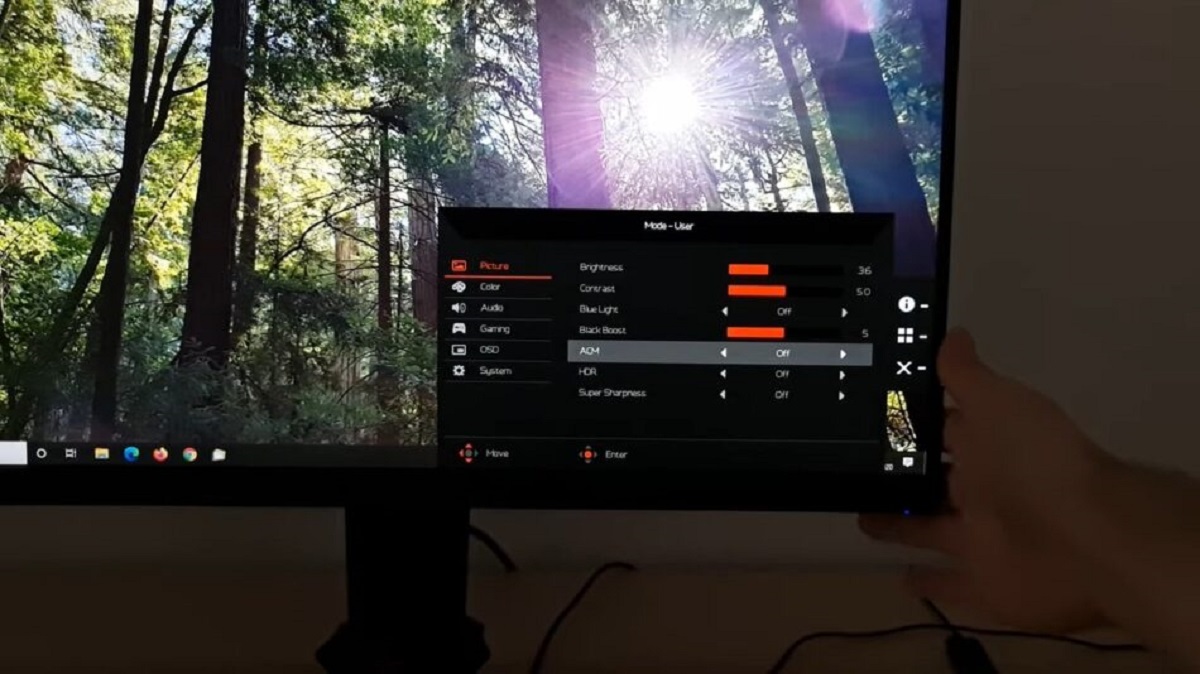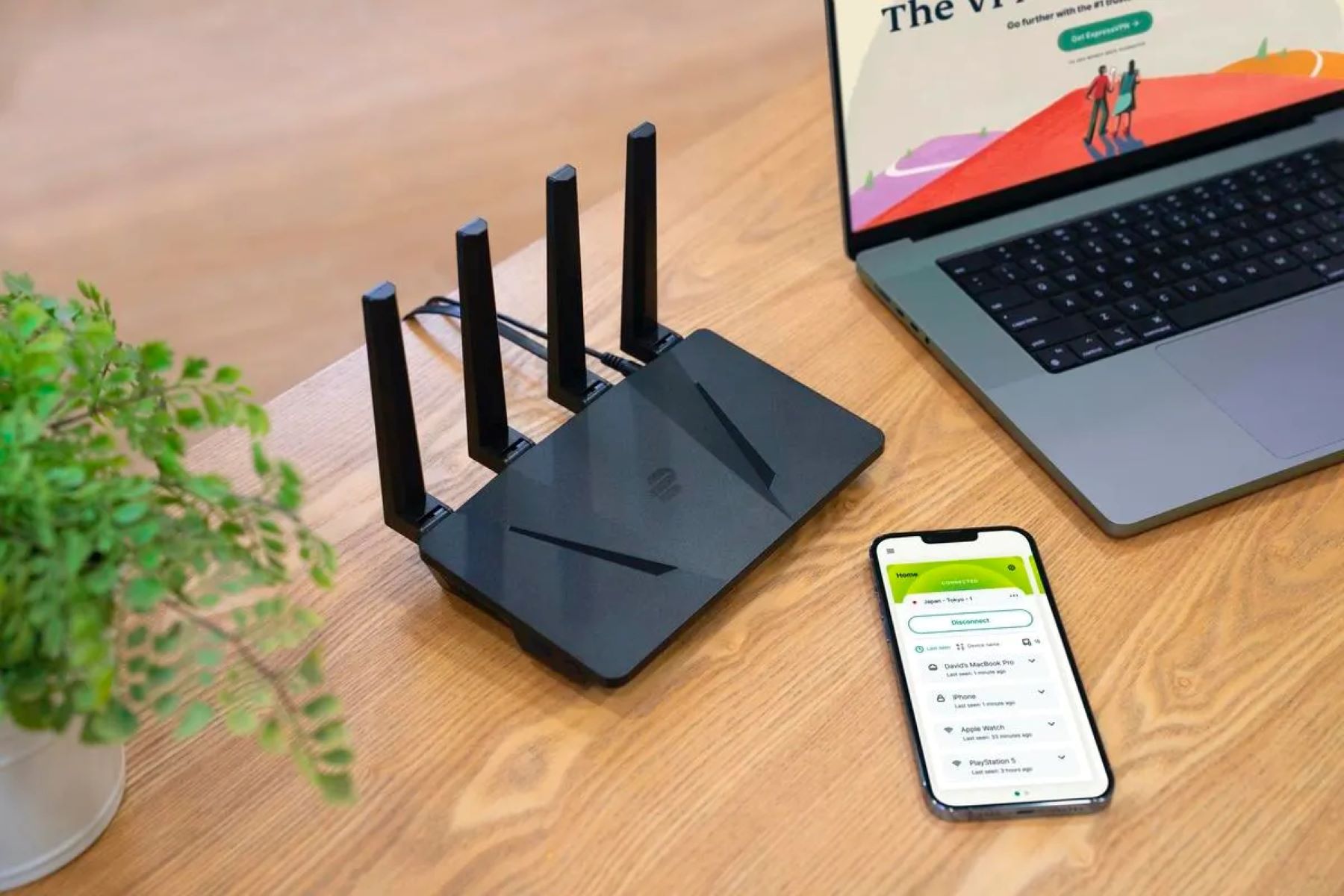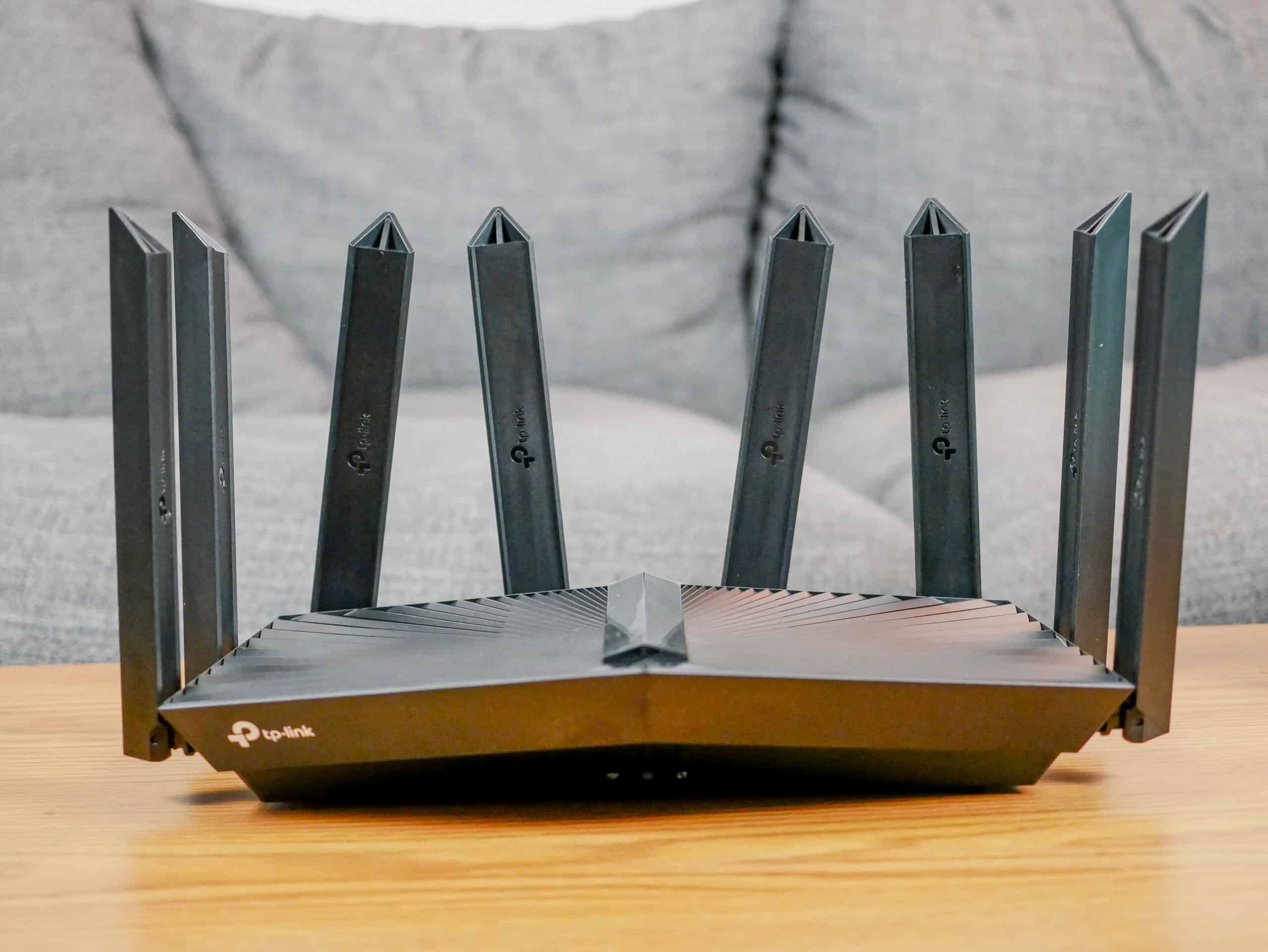Introduction
Welcome to the world of ACM monitors! If you’re wondering what an ACM monitor is and how it can benefit you, you’ve come to the right place. In this article, we’ll explore the ins and outs of ACM monitors, how they work, their benefits, and tips on choosing the right one for your needs.
ACM, short for Adaptive Contrast Management, is a technology that dynamically adjusts the contrast of a monitor depending on the displayed content. This results in improved image quality, better color reproduction, and enhanced overall visual experience.
Gone are the days when monitors had a fixed contrast setting. With ACM monitors, you can enjoy images that are vibrant, sharp, and lifelike. Whether you’re a gamer, graphic designer, programmer, or simply someone who enjoys watching movies or editing photos, an ACM monitor can take your viewing experience to the next level.
Imagine playing a visually-intensive game where the darker areas are instantly brightened, revealing hidden details, or watching a movie where the contrast adapts seamlessly to different scenes, enhancing the depth and richness of colors. This is the magic of ACM monitors at work.
Not only do ACM monitors enhance visual quality, but they also offer other compelling benefits. By automatically adjusting the contrast and brightness levels, ACM monitors can help reduce eye strain, making them ideal for professionals who spend long hours in front of a screen. Additionally, ACM monitors often come with energy-saving features, optimizing power consumption and reducing electricity costs.
When it comes to choosing an ACM monitor, there are a few key features to consider. These include the monitor size, resolution, refresh rate, connectivity options, and ergonomic design. Taking these factors into account will ensure that you find the perfect ACM monitor that suits both your needs and your budget.
In the following sections, we will delve deeper into how ACM monitors work, the specific benefits they offer, popular brands to consider, tips for setting up and calibrating your monitor, as well as maintenance and care tips to ensure the longevity of your investment. So let’s get started on this exciting journey into the world of ACM monitors!
What Is an ACM Monitor?
An ACM monitor, short for Adaptive Contrast Management monitor, is a type of display that utilizes advanced technology to dynamically adjust the contrast and brightness settings based on the content being displayed. This technology allows the monitor to optimize image quality and enhance the overall viewing experience.
Traditional monitors typically have fixed contrast and brightness settings, which can result in suboptimal image quality in certain lighting conditions or when viewing content with varying levels of brightness and contrast. However, ACM monitors overcome this limitation by automatically adjusting the display settings in real-time, ensuring that the displayed content always looks its best.
The adaptive contrast management feature of these monitors works by analyzing the brightness levels of different parts of the screen and dynamically adjusting the backlight or LCD panel properties accordingly. This leads to improved contrast ratios, sharper images, and more accurate color reproduction.
ACM monitors are especially beneficial in scenarios where there are significant variations in brightness and contrast within the displayed content. For example, when playing a video game with dark or shadowed areas, the ACM monitor will automatically increase the backlight intensity, making the dark areas more visible without compromising the overall image quality. Similarly, when watching a movie with scenes that transition between bright and dark settings, the ACM monitor will adjust the contrast and brightness settings on the fly to ensure a seamless and immersive viewing experience.
One of the key advantages of ACM monitors is the reduction of eye strain. By automatically adjusting the brightness and contrast levels to match the ambient lighting conditions and the displayed content, ACM monitors create a more comfortable viewing environment. This can be particularly beneficial for professionals such as graphic designers, photographers, and video editors who spend long hours working on their monitors.
Furthermore, ACM monitors often come equipped with energy-saving features that adjust the backlight intensity based on the content being displayed. This not only enhances the image quality but also helps reduce power consumption, making them a more environmentally friendly option.
In summary, an ACM monitor is a display that utilizes adaptive contrast management technology to dynamically adjust the contrast and brightness settings based on the displayed content. This results in improved image quality, reduced eye strain, and more energy-efficient operation. With their ability to optimize visuals and enhance viewing experiences, ACM monitors are becoming an increasingly popular choice for both professional and recreational use.
How Does an ACM Monitor Work?
An ACM monitor employs advanced technology to analyze the content being displayed and adjust the contrast and brightness settings in real-time. This adaptive contrast management allows the monitor to deliver optimized image quality based on the specific requirements of the displayed content.
When a scene or image with varying brightness levels is shown on the monitor, the ACM technology kicks in to analyze the content and make instant adjustments. The monitor uses sensors or algorithms to measure the ambient lighting conditions and evaluate the brightness levels throughout the screen. Based on this analysis, it dynamically adjusts the backlight intensity or LCD panel properties to enhance the contrast and improve the overall image quality.
The main component responsible for the adaptive contrast management in these monitors is the automatic brightness control (ABC) system. The ABC system receives input from sensors that detect the ambient lighting conditions. Using this information, it adjusts the backlighting of the monitor accordingly to achieve the desired contrast and brightness levels.
ACM monitors employ various strategies to adjust the contrast and brightness dynamically. One common approach is dynamic backlighting, where the monitor features an array of LEDs behind the display panel. These LEDs can be independently controlled to dim or brighten specific areas of the screen, resulting in higher contrast ratios and improved image quality.
Another common technique used by ACM monitors is dynamic gamma correction. The monitor dynamically adjusts the gamma values, which control the relationship between the pixel values and the displayed brightness levels. By modifying the gamma settings, the monitor can enhance the contrast and improve the accuracy of color reproduction.
The ACM technology employed in these monitors continuously monitors the content being displayed and makes on-the-fly adjustments. This ensures that the displayed images and videos maintain optimal contrast and brightness levels, regardless of variations in the content or lighting conditions in the surrounding environment.
It’s important to note that the specific implementation of the ACM technology can vary between different monitor models and manufacturers. Some monitors may have more advanced algorithms and sensors, resulting in more accurate and precise adjustments. However, the core idea remains the same – to dynamically optimize the contrast and brightness settings to provide the best possible viewing experience.
In summary, an ACM monitor works by analyzing the content being displayed and adjusting the contrast and brightness settings in real-time. Through techniques such as dynamic backlighting and gamma correction, ACM monitors optimize image quality and enhance the visual experience. By dynamically adapting to different lighting conditions and variations in content, ACM monitors offer improved contrast ratios, sharper images, and more accurate color reproduction.
Benefits of Using an ACM Monitor
Using an ACM monitor comes with a range of benefits that can greatly enhance your viewing experience and improve your productivity. Let’s explore the advantages of using an ACM monitor:
1. Improved Image Quality: With adaptive contrast management technology, ACM monitors dynamically adjust the contrast and brightness settings to optimize image quality. This results in sharper images, enhanced color reproduction, and greater depth, making your content look more vibrant and lifelike.
2. Enhanced Visual Experience: By automatically adapting to the content being displayed, ACM monitors provide a more immersive and enjoyable viewing experience. Whether you’re watching movies, playing video games, or working on graphic design projects, the dynamic adjustments in contrast and brightness ensure that you see every detail with clarity.
3. Reduced Eye Strain: ACM monitors can help reduce eye strain, especially during extended periods of computer usage. The adaptive contrast management technology adjusts the brightness levels to match the ambient lighting conditions and the displayed content, creating a more comfortable viewing environment. This can be highly beneficial for professionals who spend long hours in front of a screen.
4. Energy Efficiency: Many ACM monitors come with energy-saving features that dynamically adjust the backlight intensity based on the content being displayed. By optimizing power consumption, these monitors help reduce energy usage and lower electricity costs. Not only do they benefit the environment, but they also provide long-term savings on energy bills.
5. Versatility and Compatibility: ACM monitors are available in a variety of sizes, resolutions, and connectivity options. Whether you need a monitor for gaming, professional work, or general multimedia usage, there is an ACM monitor that can meet your specific needs. Furthermore, ACM technology is compatible with various devices, including PCs, laptops, and gaming consoles.
6. Convenient and User-Friendly: ACM monitors are designed to be user-friendly and easy to set up. With automated adjustments, you don’t have to manually tweak the contrast and brightness settings every time you switch between different types of content. The monitor seamlessly adapts to the content being displayed, providing a hassle-free experience.
7. Wide Range of Choices: The market offers a wide range of ACM monitor options from different reputable brands. This allows you to choose a monitor that suits your budget, preferences, and specific requirements. It’s important to research and compare different models to find the one that best fits your needs.
By utilizing ACM technology, these monitors offer a host of advantages that go beyond the traditional monitors’ capabilities. From improved image quality and enhanced visual experience to reduced eye strain and energy efficiency, ACM monitors provide a significant upgrade to your computing and multimedia activities.
Features to Look for in an ACM Monitor
When choosing an ACM monitor, there are several key features to consider to ensure that you find the perfect monitor that meets your needs and preferences. Here are some features worth looking for:
1. Display Size and Resolution: The size and resolution of the monitor are important factors to consider. For a more immersive experience, larger monitor sizes such as 27 inches or above are recommended. Additionally, higher resolutions like 1440p or 4K provide sharper images and more screen real estate, ideal for gaming, multimedia, or professional work.
2. Refresh Rate: The monitor’s refresh rate determines how many frames it can display per second. A higher refresh rate, such as 144Hz or 240Hz, provides smoother motion, reducing motion blur and making gameplay more fluid. Gamers and individuals who watch fast-paced content will benefit from a higher refresh rate.
3. Response Time: The response time of a monitor refers to how quickly it can change from one color to another. Lower response times, typically expressed in milliseconds (ms), result in less ghosting and motion blur, ensuring crisp visuals during fast-moving scenes. Gamers and those who watch action-packed content should look for monitors with low response times.
4. Connectivity Options: Consider the available connectivity ports on the monitor. Common options include HDMI, DisplayPort, and USB-C. Ensure that the monitor has the necessary ports to connect to your devices, such as gaming consoles, laptops, or desktops.
5. Ergonomics and Adjustability: Look for monitors with adjustable stands or mounting options, allowing you to find a comfortable viewing position. Features like tilt, swivel, and height adjustments enable you to optimize the monitor’s position according to your seating arrangement and eye level, reducing strain and improving ergonomics.
6. Panel Type: Different panel types, such as IPS, TN, and VA, offer varying characteristics in terms of color accuracy, viewing angles, and response times. IPS panels generally provide better color reproduction and wider viewing angles, making them suitable for graphic design and multimedia tasks. TN panels have faster response times, making them popular among gamers, while VA panels offer a balance between good contrast and response time.
7. Additional Features: Consider any additional features that may enhance your experience, such as built-in speakers, a USB hub, or a blue light filter to reduce eye strain. Some monitors also offer HDR (High Dynamic Range) support, delivering more vibrant and lifelike colors for compatible content.
8. Brand Reputation and Reviews: Research the reputation of the monitor’s brand and read reviews from other users and professionals. This will give you insights into the overall quality, reliability, and customer satisfaction of the monitor you are considering.
Taking these features into account will help you narrow down your options and find an ACM monitor that best suits your needs, whether it’s for gaming, multimedia consumption, or professional tasks. Remember to strike a balance between the features you prioritize and your budget constraints to make an informed choice.
Popular Brands of ACM Monitors
When it comes to ACM monitors, there are several reputable brands that have gained recognition for their quality, performance, and innovative features. Here are some popular brands to consider when shopping for an ACM monitor:
1. Acer: Acer is a well-known brand in the monitor industry, offering a wide range of ACM monitors for various uses and budgets. They are known for their affordable options that still deliver good image quality and reliable performance.
2. ASUS: ASUS is a renowned brand that offers a diverse lineup of ACM monitors catering to different needs, from gaming enthusiasts to creative professionals. ASUS monitors are highly regarded for their excellent color accuracy, fast response times, and sleek designs.
3. Dell: Dell is known for its high-quality monitors, and their ACM models are no exception. Dell offers a wide selection of ACM monitors with advanced features, precise color reproduction, and ergonomic designs, making them suitable for both professional and personal use.
4. LG: LG is a popular brand known for its innovative display technologies, and their ACM monitors showcase their commitment to quality. LG ACM monitors often feature stunning visuals, vibrant colors, and wide viewing angles, adding an immersive experience to your viewing or gaming sessions.
5. Samsung: Samsung is recognized for its cutting-edge display technology, and their ACM monitors combine sleek designs with impressive performance. Samsung ACM monitors typically offer vibrant colors, sharp imagery, and excellent contrast ratios, catering to a wide range of users.
6. BenQ: BenQ specializes in creating monitors that meet the demanding needs of creative professionals. Their ACM monitors are known for their accurate color reproduction, wide color gamuts, and precise image calibration, making them a popular choice for photographers, designers, and video editors.
7. ViewSonic: ViewSonic offers a range of ACM monitors tailored for various purposes, including gaming, multimedia, and general use. Their monitors often feature high refresh rates, fast response times, and impressive color accuracy, ensuring smooth and immersive visuals.
These are just a few examples of the popular brands that offer ACM monitors. Each brand has its own unique strengths, features, and pricing options, so it’s important to research and compare different models to find the one that aligns with your specific requirements and preferences.
By choosing a reputable brand, you can have peace of mind knowing that you are investing in a reliable and high-performing ACM monitor that will deliver a great visual experience and meet your needs for years to come.
How to Choose the Right ACM Monitor for Your Needs
When selecting an ACM monitor, it’s essential to consider your specific needs and preferences to ensure that you find the perfect monitor that will enhance your computing and multimedia experience. Here are some factors to keep in mind when making your decision:
1. Determine Your Use Case: Consider how you plan to use the monitor. Are you primarily gaming, working on graphic design projects, or consuming multimedia content? Different use cases may have specific requirements, such as high refresh rates for gaming or color accuracy for design work.
2. Monitor Size and Resolution: Assess the ideal screen size and resolution for your needs and available workspace. Larger screens provide a more immersive experience, while higher resolutions such as 1440p or 4K offer sharper image quality and more desktop real estate.
3. Refresh Rate and Response Time: Gamers and fast-paced content consumers should prioritize monitors with higher refresh rates (e.g., 144Hz or 240Hz) and lower response times to ensure smooth and fluid visuals with reduced motion blur.
4. Panel Type: Different panel types, such as IPS, TN, or VA, offer varied characteristics in terms of color reproduction, viewing angles, and response times. Consider the panel type that aligns with your preferences and intended use.
5. Connectivity Options: Ensure that the ACM monitor has the necessary ports and connectivity options you require, such as HDMI, DisplayPort, or USB-C, to connect to your devices or peripherals.
6. Ergonomics and Adjustability: Look for monitors with adjustable stands or mounting options that allow you to customize the viewing position for optimal comfort and ergonomic posture. Features like tilt, swivel, and height adjustment are beneficial for long hours of usage.
7. Budget Considerations: Set a budget range and explore ACM monitors within that range, considering the features and specifications that matter most to you. Prioritize where to allocate your budget based on your specific needs and usage requirements.
8. Read Reviews and User Feedback: Research and read reviews from trusted sources and user feedback to gauge the overall performance, reliability, and customer satisfaction of the ACM monitors you are considering. This can provide valuable insights into the real-world experiences of other users.
9. Warranty and Customer Support: Check the warranty and customer support offered by the manufacturer. A solid warranty can provide peace of mind and reassurance in case of any malfunctions or defects.
By considering these factors and aligning them with your needs and preferences, you’ll be equipped with the knowledge to choose an ACM monitor that meets your requirements and provides an immersive and satisfying viewing experience.
Setting Up and Calibrating an ACM Monitor
Once you have chosen an ACM monitor and brought it home, the next step is to set it up properly and calibrate it to ensure the best possible image quality. Follow these steps for a smooth setup and calibration process:
1. Unpack and Assemble: Carefully unpack the monitor and ensure that all the necessary components are present. Follow the manufacturer’s instructions to assemble the monitor, attach the stand or mount it on a compatible arm or bracket.
2. Connect Cables: Connect the necessary cables to your ACM monitor, such as power cables and video cables (HDMI, DisplayPort, etc.), ensuring that they are securely plugged in on both ends. Use high-quality cables for the best signal transmission.
3. Adjust Monitor Position: Adjust the position and placement of the monitor to suit your viewing preferences and ergonomics. Position the monitor at eye level and at a comfortable distance from your seating position to minimize strain on your eyes and neck.
4. Power On and Initial Setup: Power on the monitor and follow any on-screen prompts for the initial setup. This may include language selection, brightness adjustment, and other basic settings. Use the monitor’s control buttons or an accompanying software interface to navigate through the setup process.
5. Calibrate Display Settings: Calibration ensures accurate color reproduction and optimal image quality. You can perform calibration using built-in monitor settings, software tools, or external calibration devices. Adjust settings like brightness, contrast, color temperature, and gamma to achieve your desired results. Consider using calibration guides or professional calibration tools for more precise adjustments.
6. Test and Fine-Tune: Display test images or content to assess the monitor’s performance and make any necessary fine-tuning adjustments. Look for accurate color representation, uniform brightness across the screen, and minimal backlight bleed or color banding.
7. Adjust on-Screen Display (OSD) Settings: Explore the monitor’s OSD settings to fine-tune additional preferences. This may include adjusting sharpness, aspect ratio, adaptive sync features, and any other settings available on your specific ACM monitor.
8. Consider Ambient Lighting: Take into account the ambient lighting conditions in your viewing environment. Avoid strong overhead lights or sources of glare, as they can affect image quality and eye comfort. Consider using indirect or diffused lighting to minimize reflections and create a more visually neutral environment.
9. Regular Calibration Maintenance: Monitor calibration may drift over time, so it’s recommended to regularly recalibrate your ACM monitor to ensure consistent and accurate performance. Schedule recalibration periodically or whenever you notice any significant changes in image quality.
By following these steps, you’ll be able to set up and calibrate your ACM monitor for the best display performance. Proper calibration will enhance color accuracy, contrast ratios, and overall image quality, ensuring that you fully enjoy the capabilities of your ACM monitor.
Maintenance and Care for an ACM Monitor
Maintaining and caring for your ACM monitor is important to ensure its longevity and optimal performance. By following these maintenance tips, you can keep your monitor in excellent condition for years to come:
1. Cleaning: Regularly clean the monitor to remove dust, fingerprints, and smudges from the screen surface. Use a soft, lint-free microfiber cloth to gently wipe the screen. Avoid using harsh chemicals or rough materials that can damage the monitor or leave scratches.
2. Proper Ventilation: Ensure that the monitor has proper ventilation to prevent overheating. Do not block any air vents or obstruct the monitor’s cooling system. This will help maintain consistent performance and prevent damage to internal components.
3. Power Off When Not in Use: If you are not using the ACM monitor for an extended period, power it off completely to conserve energy and prolong the lifespan of the monitor. This also helps prevent any potential issues that may arise from prolonged power usage.
4. Avoid Screen Burn-in: To prevent screen burn-in, avoid displaying static images for extended periods, especially at high brightness levels. If you need to leave the monitor on for a long time, use screensavers or enable power-saving features that turn off the display after a certain period of inactivity.
5. Adjust Brightness and Contrast: Adjust the brightness and contrast settings to appropriate levels. Excessive brightness can cause eye strain, while excessive contrast may result in loss of detail in dark or bright areas. Finding the right balance ensures optimal usage and prevents unnecessary eye fatigue.
6. Protect from Power Surges: Use a surge protector or uninterruptible power supply (UPS) to protect your ACM monitor from power surges or fluctuations. This helps prevent damage to the monitor’s internal components due to electrical issues.
7. Transportation and Storage: When transporting or storing the monitor, ensure it is properly secured and protected. Use the original packaging or a suitable carrying case to prevent any accidental damage. Avoid subjecting the monitor to extreme temperatures or humidity levels.
8. Software Updates: Keep the monitor’s firmware and drivers up to date. Check the manufacturer’s website periodically for any available software updates or patches, as they may include performance improvements or bug fixes for your ACM monitor.
9. Follow Manufacturer’s Guidelines: Refer to the manufacturer’s guidelines, user manual, and support resources for any specific maintenance and care instructions that are specific to your ACM monitor model. These guidelines will provide valuable information tailored to your particular monitor.
By following these maintenance and care tips, you can prolong the lifespan of your ACM monitor, maintain its optimal performance, and prevent common issues. Regular cleaning, proper ventilation, and adherence to manufacturer guidelines will ensure that you continue to enjoy vibrant visuals and an enjoyable viewing experience for years to come.
Conclusion
ACM monitors bring a new level of visual quality and performance to your computing and multimedia experiences. With their adaptive contrast management technology, these monitors dynamically adjust the contrast and brightness settings to deliver optimal image quality in real-time. Whether you’re a gamer, creative professional, or simply someone who appreciates striking visuals, an ACM monitor can greatly enhance your viewing experience.
We explored the benefits of using an ACM monitor, including improved image quality, enhanced visual experience, reduced eye strain, and energy efficiency. The ability of ACM monitors to dynamically adapt to different lighting conditions and content types ensures that you always see the best version of your visuals.
When choosing an ACM monitor, it’s important to consider factors such as display size, resolution, refresh rate, response time, connectivity options, ergonomics, and budget. Popular brands like Acer, ASUS, Dell, LG, Samsung, BenQ, and ViewSonic offer a diverse range of ACM monitors with different specifications, designs, and price points to suit various needs and preferences.
We discussed the importance of setting up and calibrating the ACM monitor properly to ensure optimal image quality. By following the necessary steps, such as connecting cables, adjusting the monitor position, and calibrating display settings, you can achieve accurate color reproduction, sharp imagery, and an immersive viewing experience.
Maintaining and caring for your ACM monitor is crucial for its longevity and performance. Regular cleaning, proper ventilation, avoiding screen burn-in, and following manufacturer guidelines will help keep your monitor in excellent condition for years to come.
In conclusion, ACM monitors offer a host of benefits and features that can greatly enhance your visual experience. By understanding their technology, considering your specific needs, setting up and calibrating correctly, and providing proper maintenance and care, you can fully enjoy the superior image quality and performance that ACM monitors have to offer.

























